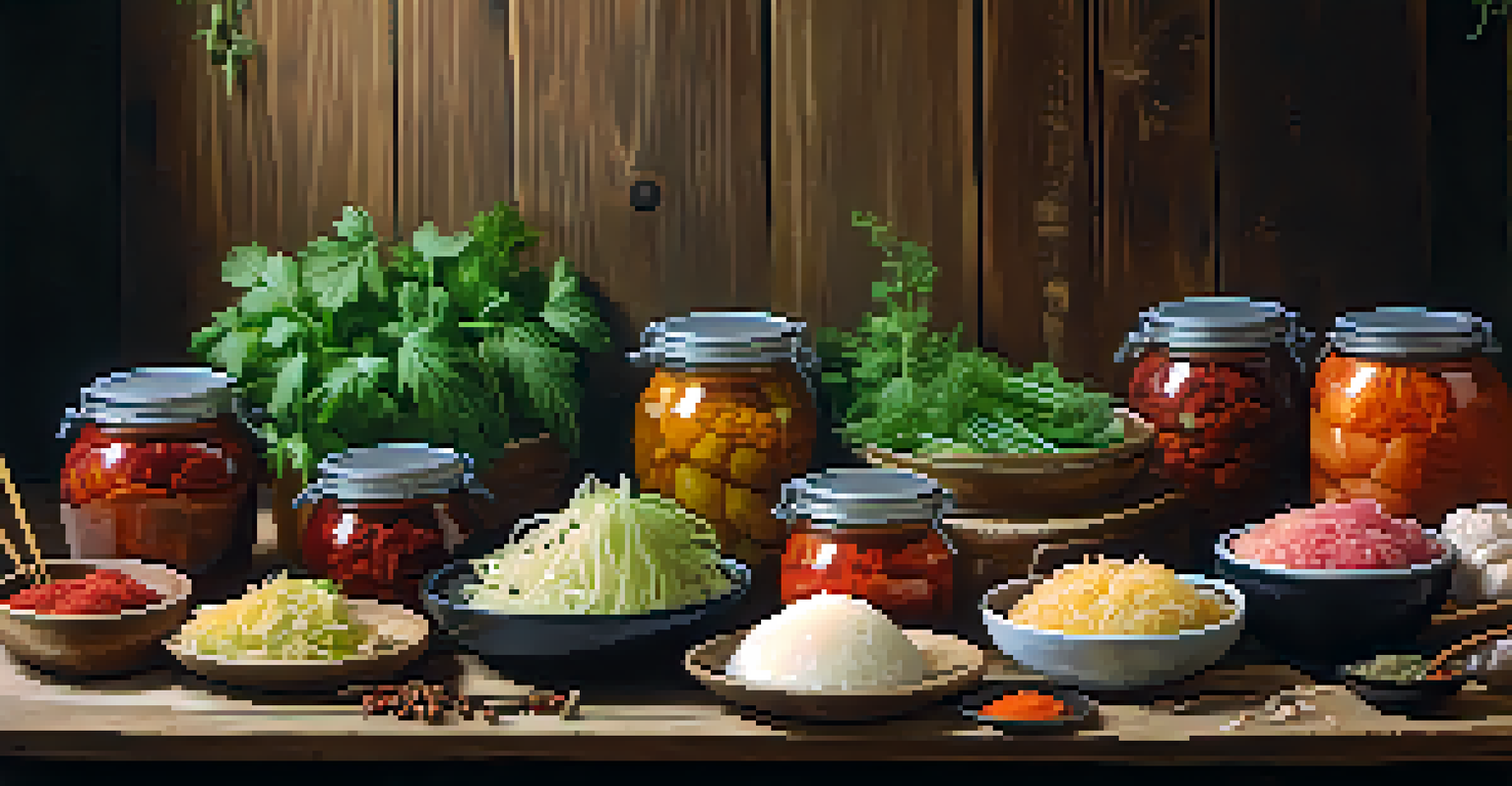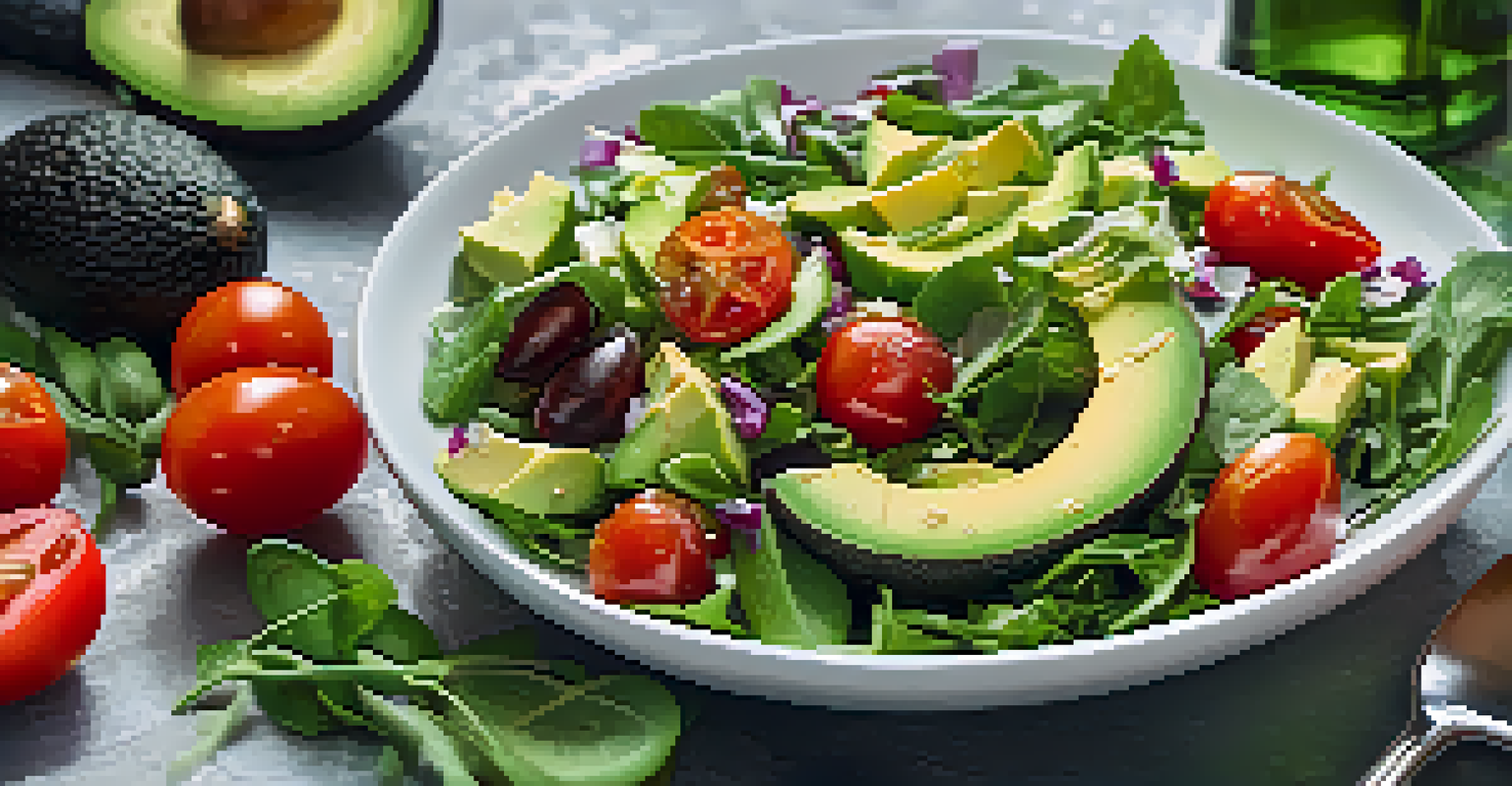How Acid-Base Reactions Affect Vegan Flavor Profiles

Understanding Acid-Base Reactions in Cooking
At its core, an acid-base reaction involves the interaction between acidic and basic substances. In cooking, these reactions can dramatically alter flavors, textures, and even the nutritional profile of foods. For example, when lemon juice (acid) is added to a dish with baking soda (base), it creates a fizzing reaction that can lighten baked goods.
Cooking is like love. It should be entered into with abandon or not at all.
For vegans, understanding these reactions is essential as they often rely on plant-based ingredients that can benefit from acidity or alkalinity. The right balance can enhance the natural flavors of vegetables, grains, and legumes, making them more palatable. This is especially true in dishes like vegan cheese, where acidity can help mimic the tang of traditional dairy.
Moreover, mastering these reactions allows for creativity in the kitchen, enabling cooks to experiment with flavors and textures. By manipulating the pH of ingredients, vegan chefs can create surprising dishes that challenge perceptions of plant-based cuisine.
The Role of Acidity in Flavor Enhancement
Acidity can brighten flavors and add depth to dishes, which is crucial in vegan cooking. Ingredients like vinegar, citrus, and fermented foods not only preserve but also elevate the overall taste experience. Think about how a splash of balsamic vinegar can transform a simple salad; it’s all about balance.

When used correctly, acidic ingredients can cut through the richness of other components, making a dish feel more complete. For instance, adding a squeeze of lime to a coconut curry can enhance its complexity and bring out the spices more prominently. This is particularly beneficial in vegan dishes that may lack the fat content found in animal products.
Acidity Enhances Vegan Flavors
Incorporating acidic ingredients like vinegar and citrus can brighten flavors and add depth to vegan dishes.
Additionally, the acidity can also enhance the perception of sweetness. This is why you often see recipes for vegan desserts that include a hint of lemon or vinegar; it helps to round out the flavor and make the dish more enjoyable.
How Bases Contribute to Flavor and Texture
While acids often steal the spotlight, bases also play a crucial role in cooking, particularly in vegan recipes. For instance, alkaline ingredients like baking soda can alter the texture of baked goods, leading to a fluffier result. Understanding how to incorporate these bases can elevate the quality of your vegan dishes.
The secret of good cooking is, of course, good ingredients.
Moreover, bases can neutralize acidity, creating a more balanced flavor profile in certain recipes. For example, when making a plant-based cheese, the addition of a small amount of baking soda can help to mellow out overly tangy flavors, making it more palatable for a wider audience. This balance is key in ensuring all flavors shine through without one overpowering the others.
Additionally, the use of alkaline ingredients can also enhance the color of certain vegetables, making them more visually appealing. When cooking green vegetables in an alkaline solution, you might notice that they retain their vibrant color, which is always a treat for the eyes.
Fermentation: A Flavorful Journey
Fermented foods are a fantastic example of acid-base reactions in action, and they hold a special place in vegan cooking. As bacteria break down sugars, they produce lactic acid, which not only preserves the food but also develops complex flavors. Think of kimchi or sauerkraut; these foods are not just tangy but packed with umami, enhancing any dish they're added to.
Incorporating fermented ingredients into vegan meals can significantly boost flavor profiles. For instance, adding a spoonful of miso paste to a soup can introduce depth and richness that might be lacking in a standard vegetable broth. This umami punch is especially valuable in vegan recipes, which often aim to replicate the savory notes found in meat-based dishes.
Bases Create Texture and Balance
Using alkaline ingredients such as baking soda can improve the texture of baked goods and help balance flavors in vegan recipes.
Furthermore, the acidity from fermentation can also aid in digestion, making your meals not only tastier but healthier too. The beneficial probiotics found in these foods contribute to gut health, offering yet another reason to embrace fermentation in your vegan cooking.
Balancing Flavors for Vegan Dishes
Achieving a harmonious balance of flavors is essential in any cooking style, but especially in vegan cuisine, where ingredients can sometimes be more subtle. Learning how to balance acidity and alkalinity can help you create dishes that are not only delicious but also complex. This often involves tasting as you go and making adjustments based on your palate.
For example, if a dish feels too flat, consider adding a splash of vinegar or a squeeze of lemon juice. On the other hand, if you find a dish too tangy, a pinch of baking soda can help balance things out, bringing the flavors into harmony. This kind of intuitive cooking encourages creativity and confidence in the kitchen.
Ultimately, the goal is to create meals that are satisfying and enjoyable. By understanding and applying the principles of acid-base reactions, vegan cooks can craft dishes that are not only nutritious but also bursting with flavor.
Practical Tips for Home Cooks
For those looking to experiment with acid-base reactions in their vegan cooking, start simple. Keep a variety of acidic and basic ingredients on hand, such as citrus fruits, vinegar, baking soda, and even fermented products like kimchi or sauerkraut. This way, you can easily adjust your recipes as you taste and refine your dishes.
Another tip is to practice with common recipes. For instance, when making a vegan salad dressing, try combining different types of vinegar with olive oil and seasonings. This allows you to explore how acidity impacts the overall flavor and helps you to find the perfect balance for your taste preferences.
Fermentation Boosts Flavor and Health
Fermented foods not only enhance the taste of vegan meals but also provide health benefits through beneficial probiotics.
Lastly, don’t be afraid to experiment! Cooking is all about trial and error. By keeping a journal of what works and what doesn’t, you’ll build a repertoire of successful flavor combinations that will enhance your vegan cooking adventures.
Conclusion: The Power of Flavor Chemistry
Understanding acid-base reactions can significantly enhance the flavors of vegan dishes. By mastering these concepts, cooks can create meals that are not only satisfying but also bursting with complexity and depth. This knowledge helps to bridge the gap between traditional cooking techniques and modern vegan cuisine.
As the culinary landscape continues to evolve, more people are discovering the joys of plant-based eating. By applying the principles of flavor chemistry, we can challenge ourselves to create innovative and delicious vegan meals that stand out on any dining table. It’s all about harnessing the power of nature’s ingredients to create something truly special.

In the end, whether you're a seasoned chef or a home cook, embracing the science behind flavor can elevate your cooking. So grab your lemons, vinegar, and baking soda, and start experimenting; the delicious world of vegan cooking awaits!